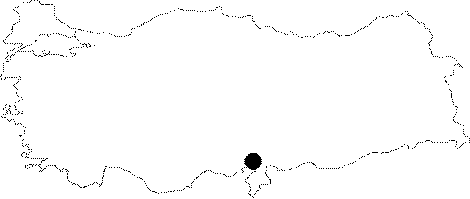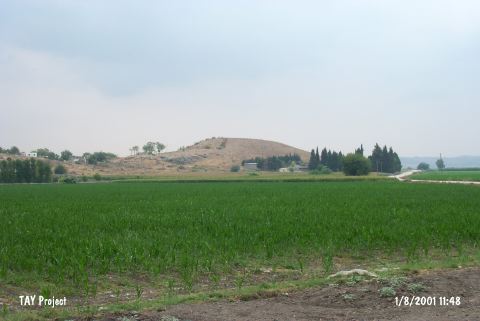|
©The Archaeological Settlements of Turkey - TAY Project
|
|
|
|
|
|
Adatepe 2 |
|
|
For site maps and drawings please click on the picture...  |
For photographs please click on the photo...  |
|
Type:
|
Mound |
|
Altitude:
|
110 m |
|
Region:
|
Mediterranean |
|
Province:
|
Adana |
|
District:
|
Ceyhan |
|
Village:
|
Hamdili |
|
Investigation Method:
|
Survey |
|
Period:
|
Ceramic |
|
|
|
 |
|
| Location: It is located on a rocky block called Kartalkaya Tepesi; between Adatepe and Hamdili villages; south of the Ceyhan-Osmaniye motorway; 7 km east of Ceyhan District; east of Adana Province. It locates 2.4 km south of Adatepe Village. |
| Geography and Environment: The site is located in the northern Yukari Ova (Upper Plain) section of the Çukurova Plain; which is surrounded by the Bolkar Mountains to the northwest; the Akdaglar Mountains to the north and the Amanos Mountains to the east. The Adatepe mound lies on a natural hill which overlooks the valley that leads to the Kürtkulak Geçidi mountain pass. This medium-sized conical mound is 20 m high. There are ruins on the northern side of the mound which date to a "later"; unidentified period. |
| History: |
| Research and Excavation: The site was discovered by M. V. Seton-Williams during the "Cilician Surface Survey" he conducted in 1951. The surface survey; like most in that period; was not systematic. It takes place in the registered archaeological sites list prepared by Ministry of Culture and Tourism. |
| Stratigraphy: Although it has not been confirmed by excavation; the surface finds indicate that there was continuous habitation at the site from the Late Neolithic-Early Chalcolithic Period to Byzantine times (with the exception of the Early Bronze Age). The chronology resembles other Cilician sites such as Yumuktepe in Mersin and Gözlükule in Tarsus. |
| Small Finds: Pottery: It is reported that the site yielded Pre-Halaf burnished and painted ware [Seton-Williams 1954:130]. No detailed information has been provided on the finds. |
| Remains: |
| Interpretation and Dating: It is difficult to judge whether there was Late Neolithic habitation at this site. In ASPRO; the site has been dated to the second half of the sixth millennium [Hours et al. 1994:46]. Although only a minimal number of artifacts were found; the earliest phase at this site has been assigned to a pre-Halaf period between the Late Neolithic and the Early Chalcolithic. |